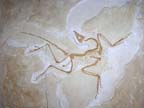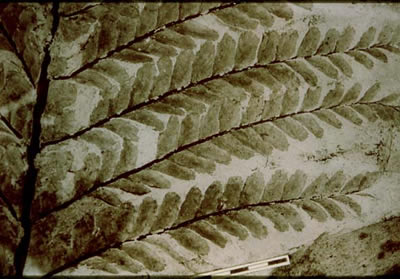 |
 |
 |
 |
 |
Produced
by the Population Genetics and Evolution class, Furman University |
||||
 |
 |
 |
 |
 |
Produced
by the Population Genetics and Evolution class, Furman University |
||||
 |
The
Devonian: Archaeopteris |
 |
||
| The plant
life of the early Devonian is characterized by several radiations of primitive
vascular plants like the rhyniophytes and zosterophyllophytes. Through
the period, these plants evolved into taller and taller vegetation, with
the oldest woody trees evolving in the mid-Devonian - typified by the
Gilboa forests of Wattieza trees that grew as tall as 8m (Wikipedia
2010a). By the end of the Devonian, significant forests had evolved (Murphy
2005). One of the principal canopy trees of these first forests was the
progymnosperm Archaeopteris; a genus of tall (20m) trees that
is found on every land mass of the Devonian Period and produced spores
instead of seeds (Wikipedia 2010b). Forests had a dramatic effect on terrestrial
and aquatic habitats, adding deep, rich organic inputs to soils, stabilizing
soils and streambanks, and moderating stream volumes by reducing surface
flow. In short, the evolution of the forest biome begins with these
Wattieza and Archaeopteris forests. Page by Wade Worthen |
 |
| Archaeopteris leaf. . Photo from: University of London | |
|
Murphy D. 2005. The first forests. Devonian Times. Accessed February 27, 2010. Wikipedia. 2010a. Wattieza. Accessed February 27, 2010. Wikipedia. 2010b. Archaeopteris. Accessed February 27, 2010. |